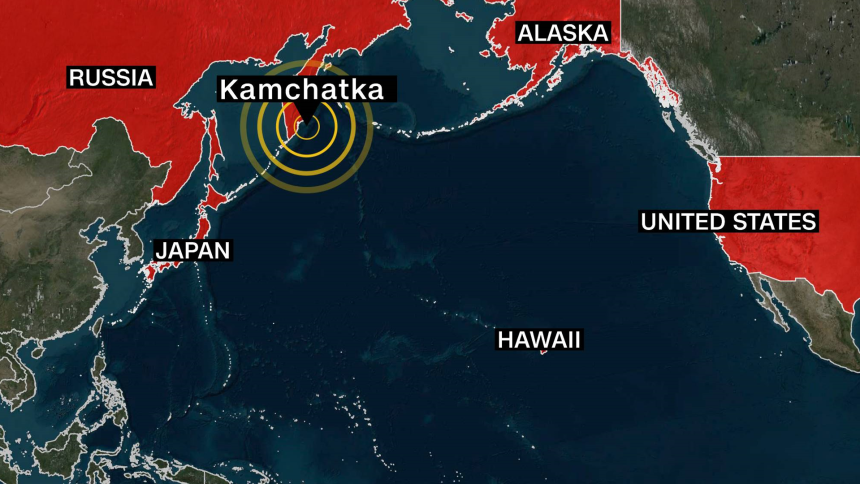Tsunami Warning for Northern California After Major Pacific Earthquake
A critical stretch of Northern California's coastline remains under a high-level tsunami warning following a powerful earthquake in Russia's far east.
NEWS
Muhammad Umaish
7/30/20252 min read


California:
Tsunami Alert Continues for Isolated Northern California Coastline After Major Pacific Quake
A specific stretch of the Northern California coastline, approximately 40 miles long and encompassing areas from just south of Klamath up to the Oregon border, including Crescent City, remains under a tsunami warning this Wednesday morning. This indicates the most severe alert status for the region. Crescent City has already reported a tsunami wave measuring 3.6 feet earlier today.
This particular coastal section is uniquely vulnerable to more intense tsunami impacts. Its underwater topography, also known as bathymetry, functions like a natural funnel. Just as land features can channel strong winds, a narrow underwater valley can concentrate and amplify incoming tsunami waves, leading to more severe effects compared to neighboring areas.
Russia:
Pacific Nations Respond to Powerful Earthquake Near Russia's Far East
The ongoing alerts across the Pacific Basin are a direct consequence of a powerful earthquake that struck Russia's far eastern region. This seismic event prompted widespread tsunami advisories and warnings from Japan to Chile.
Near the earthquake's epicenter, in Russia's Severo-Kurilsk district, emergency measures were put into effect after substantial tsunami waves hit the coast. Reports from state media TASS and eyewitness videos depicted boats being dislodged from their moorings and storage containers swept away by the water's force.
Japan:
Waves affected large portions of the country's northern and eastern coasts, with some reaching up to 4.2 feet (1.3 meters) on the east coast of Hokkaido. Although some tsunami warnings were downgraded to advisories by Wednesday afternoon, heightened alerts persisted for the Hokkaido and Tohoku regions. Japanese authorities underscored that tsunami events can involve multiple waves, advising affected residents to remain in secure locations until all alerts are officially withdrawn.
"Forecasts indicate that waves up to 13 feet (4 meters) might reach islands such as Ua Huka, Nuku Hiva, and Hiva Oa overnight from Tuesday into Wednesday.".
Elsewhere in the Pacific, the Philippines and Indonesia both issued initial tsunami warnings, though the Philippines later rescinded its advisory. The US National Weather Service Guam canceled a tsunami advisory for Guam and the Northern Mariana Islands on Wednesday, confirming that other locations across Micronesia were also no longer at risk.
South America:
In South America, Chile's national tsunami system indicated a threat to its entire coastline, while Peru's naval authorities confirmed they are closely monitoring the unfolding situation. Ecuador's Oceanographic and Antarctic Institute forecasted a potential 4.6-foot (1.4-meter) wave for the Galapagos Islands, a renowned biodiversity hotspot, by 9 a.m. local time.
Finally, the Integrated Tsunami Alert System of Mexico and Central America released a tsunami alert covering coastal areas from Ensenada, on Mexico's northwest coast, down to Panama.
